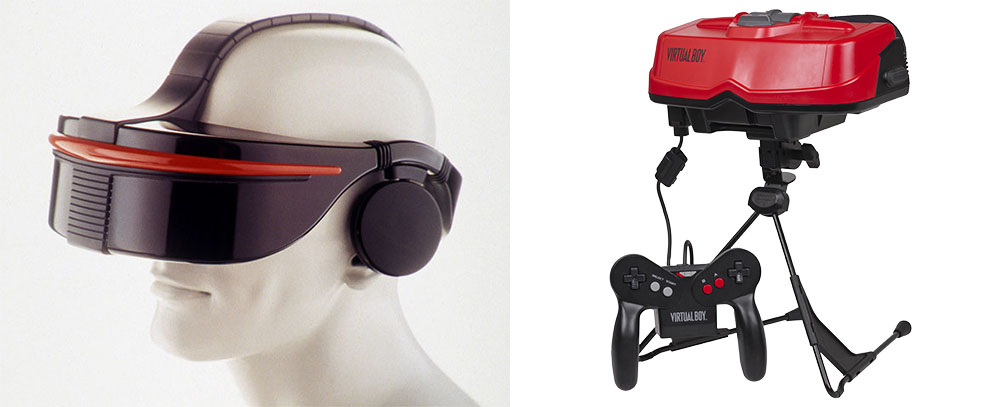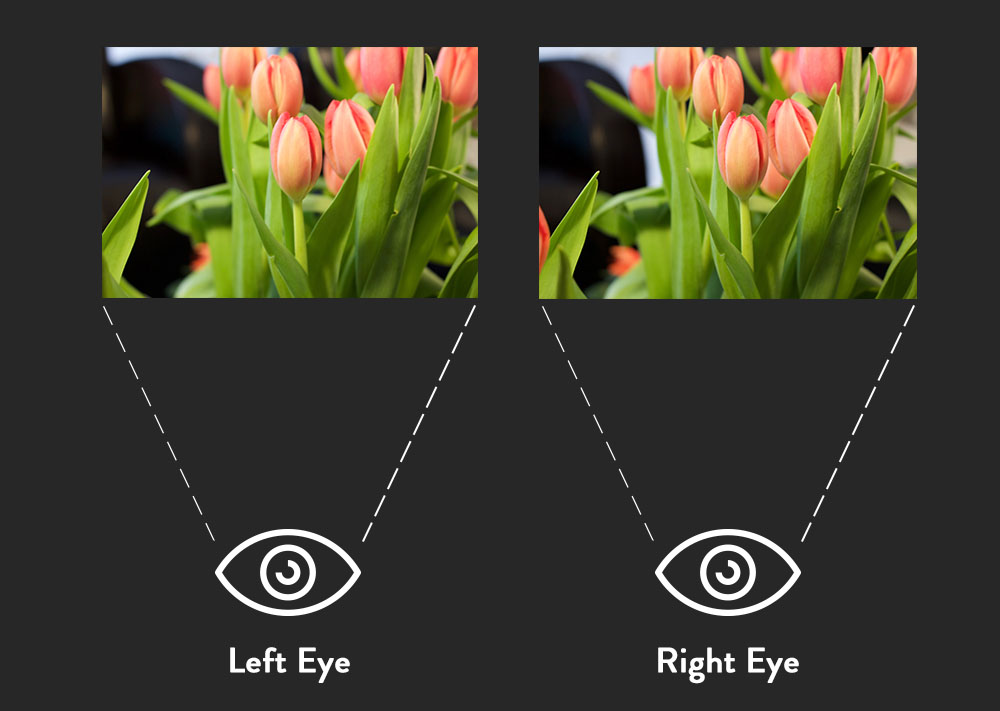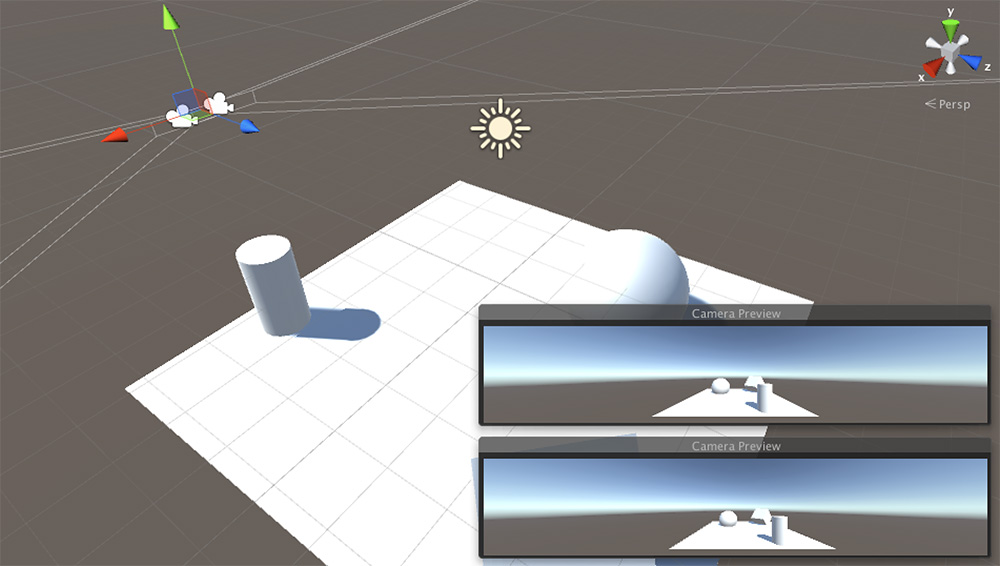Virtual Reality is by all measures one of the biggest trends of 2015, 2016 and will for sure continue generating buzz in the years ahead. In this article I am going to explain the technical basics behind Virtual Reality. Understanding the basics will help us better understand its possible future impact in our everyday lives.
Virtual Reality is by no means a new concept – it’s earliest technological traces can be found in the 1950’s. It all started to gain traction in the 90’s with the release of Sega’s VR and Nintendo’s Virtual Boy – both technological marvels at that time.

Sega’s VR & Nintendo’s Virtual Boy
Alongside the console versions of head-mounted virtual reality devices there was the Forte VFX1, a consumer-level VR-Device with a headset (including two 263 x 230 pixel LCDs with 256 colors), a controller and a dedicated card that you could plug into your computer. Back then, time wasn’t right, technology wasn’t advanced enough and thus most headsets faded in obscurity. Albeit looking like archaic from today’s standpoint, all of these devices work on the same principle as today’s cutting edge VR-Devices like the Oculus Rift or the HTC Vive.
How it works
Our eyes enable us to perceive the world in three dimensions. Each eye captures a slightly different image of our surroundings. Our brain then combines both images, thus giving us a sense of depth.
Virtual reality works according to the same principle. By displaying two, slightly different versions of the same scenery on the displays of today’s VR-Headsets, each eye sees a slightly different image. Thus our brain is tricked into believing, the virtual environment is “real”.

The visual part of creating a virtual environment is relatively simple. In 3D Game Engines, everything is done by simply adding a second camera to the environment. By precisely adjusting both cameras to reflect the height of a real person as well as the distance between their eyes, each camera is used to render the image for one eye.

Technical challenges
“Simulation Sickness” (closely related to motion sickness) was a common problem in the early days of virtual reality. The term refers to people feeling dizzy and disoriented while watching the simulated world before their eyes. “Simulation Sickness” may occur, when the frame-rate is too low. Keeping the frame rate on a high level is thus one of the biggest challenges of Virtual Reality.
Movies and series are commonly shot with 24 or 25 frames per second. Video games on consoles often try to maintain a constant frame rate of 25-30 frames per second with some fast paced games at around 60 frames per second. The requirements for virtual reality headsets are higher: the Oculus Rift for example runs at 90 frames per second. And as if this wasn’t enough, modern headsets often exceed full-hd displays with resolutions up to 1080×1200 pixels per eye.
That’s the reason, why you’ll need a pretty beefy computer for virtual reality. Sony even plans to release a new version of its PlayStation 4 in order to make a virtual reality experience possible.
Bringing in the other senses
While the visual aspect of Virtual Reality is certainly the biggest factor, stimulating other senses deepens the immersion into the virtual world.
The premise of VR is to create an alternate reality, but without the right audio cues to match the visuals, the brain doesn’t buy into the illusion.
Mona Lalwani, Engadget
Most VR-Headsets come with attached headphones, enabling a truly immersive experience. This is achieved by including the current head position and tilt when calculating the audio for the game world.
Controlling the virtual world is often done by using a gamepad. Examples for a more captivating form of input are the Virtuix Omni, a 360° treadmill enabling you to walk through the virtual realms, and the Manus VR, a set of virtual reality gloves enabling you to use your hands in the fictive world.
Both of these devices show, how big the industry around virtual reality has become so far. There is no day without news of new, exciting input devices, applications and new VR-Systems.
The future
Virtual Reality seems to be one of the biggest players in the future of entertainment. Virtual reality movies, games or applications – the possibilities are endless.
But VR wasn’t solely developed for our pleasure. There is a huge market for VR in training like the military or civil areas, education or the building and construction industry in general to mention just a few fields of application. VR will enable architects to see their designs and creations firsthand without ever creating a miniature model of their design. It enables artists to see their designs in virtual space and children to experience history firsthand.
Virtual Reality might seem like a buzzword today – but it’s here to stay!








